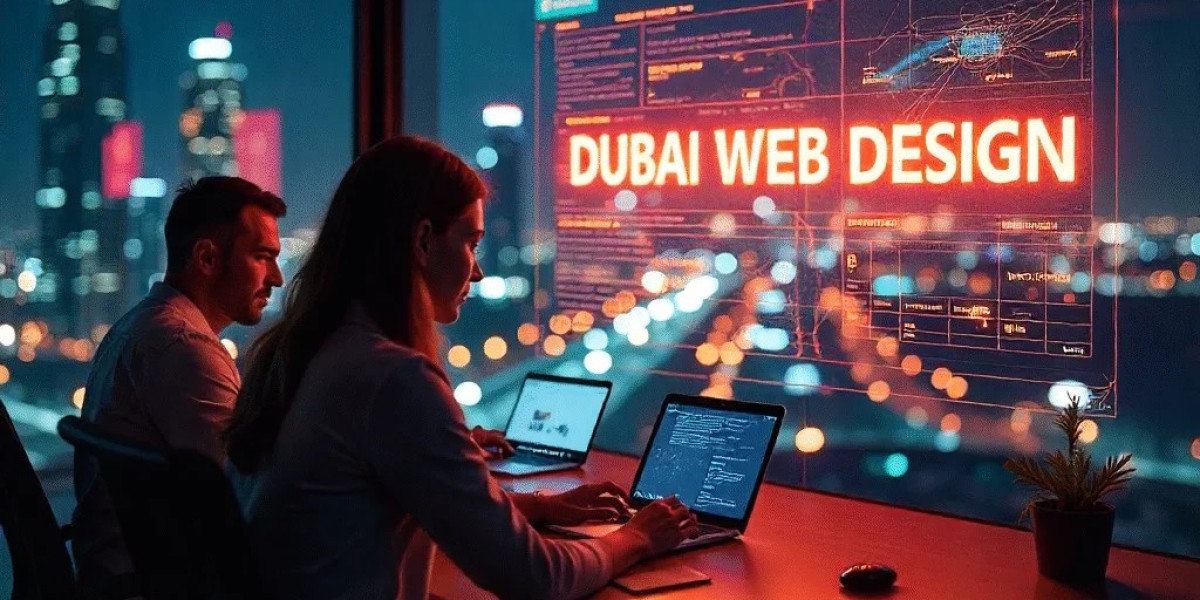In a city as dynamic and competitive as Dubai, where ambitious startups sit beside multinational brands, your website isn’t just a digital brochure—it’s a cornerstone of your entire business strategy. “Web design Dubai” has become a phrase loaded with expectations: responsive across devices, visually premium, and engineered for conversions. Here’s what business in Dubai need to know.
Why Web Design Matters in Dubai
Dubai’s online ecosystem is distinct in several ways. First, internet and mobile usage rates are extremely high, meaning the majority of users access your site via smartphone. One local agency emphasises: “Over 70% of UAE users access websites on their phones.”
Second, there’s intense competition—not only locally but regionally—with visitors and customers expecting a high-end digital experience. The same agency notes that “the website is your first impression” and that a “weak website can lose a client before they even read your offer.”
Third, the bilingual (Arabic + English) market demands careful localisation. Your site must not only load fast but speak to different cultural sensibilities and languages.
Key Features of Quality Web Design in Dubai
When selecting a web design partner in Dubai, these are non-negotiable elements:
- Responsive / mobile-first layout: A site must look and perform well on smartphones, tablets and desktops; agencies stress the importance of responsive design.
- User experience (UX) and user interface (UI) tailored to Dubai audiences: That means fast loading, clear navigation, bilingual support, and culturally attuned visuals.
- Technical SEO, performance optimisation and future-proofing: In such a competitive market, your site must be built with good structure, well-optimised code and scalable design.
- Bespoke design rather than “template slapped on”: Many providers emphasise custom design aligned with brand identity, rather than generic templates.
- Maintenance & scalability: Websites need ongoing updates, backup, security—especially in fast-moving markets.
Cost Landscape for Web Design in Dubai
Understanding how much to invest is critical. Here are typical cost ranges for the Dubai market (2025):
- Basic business website (5-7 pages) starts from around AED 3,000–8,000 in some cases
- Small business, CMS sites with moderate features: AED 7,000–55,000 depending on complexity.
- E-commerce platforms with payment gateways, inventory management: AED 8,000–110,000+ depending on features and integrations.
- Premium custom sites with high-brand value, multilingual, heavy integrations: up to AED 145,000 in some cases.
These numbers underline the importance of defining scope clearly: number of pages, level of customisation, integrations, language support, hosting, and maintenance all matter.
Tips for Selecting a Web Design Partner in Dubai
- Review their portfolio: Make sure they’ve executed for similar industries and that their design quality aligns with your brand aspirations.
- Clarify project scope and deliverables: How many pages? Multilingual? E-commerce? Who supplies content? What’s the timeframe?
- Ask about ongoing support: After launch, will they provide maintenance, updates, training? A one-time build isn’t enough in a dynamic market.
- Check for local market understanding: A Dubai-based or UAE-experienced agency will understand local user behaviour, cultural nuances, mobile usage patterns, Arabic language support.
- Balance cost and value: Beware ultra-cheap offers. Some local discussions highlight how bargain pricing can compromise quality. For example:
“We spend time explaining the process … yet many still bargain around 500–1000 AED.”
A smart investment today prevents multiple redesigns later.
- Demand performance metrics: Ask for expected loading times, optimisation standards, mobile & desktop experience.
- Plan for growth: If your site is likely to expand (e-commerce, booking systems, multilingual), ensure the foundation is scalable.
The Outlook: Why Web Design in Dubai Is Here to Stay
Dubai continues to evolve as a digital-first business hub; the pressure for strong online presence keeps increasing. For many businesses, the website is the first “storefront” a customer sees—especially for an international audience. Quality design influences credibility, trust and conversion.
Also, with rising use of mobile devices, voice assistants, bilingual audiences and e-commerce growth, businesses that invest in well-designed, optimised websites position themselves ahead of the curve.
Conclusion
For any business operating in or targeting Dubai, investing in strategic web design is not optional—it’s essential. A website that looks great, loads fast, works on mobile speaks your audience’s language and supports your business goals can be a major differentiator. By working with experienced Dubai-centric agencies, defining clear scope, focusing on quality and planning for future growth, your website becomes more than a digital presence—it becomes a business asset.








